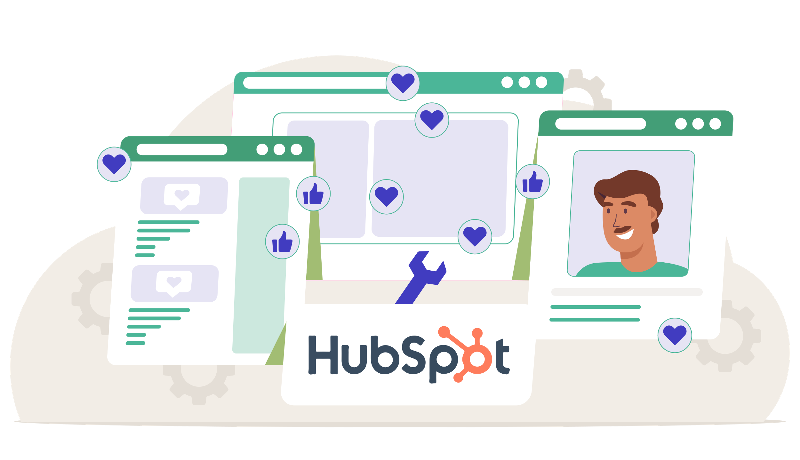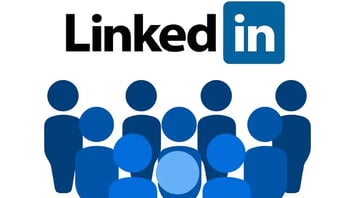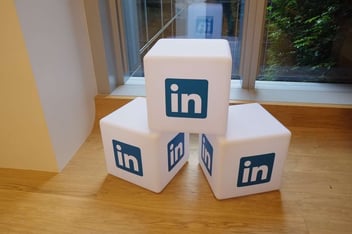Discover how HubSpot Marketing Hub can revolutionize social media marketing. Automate multi-channel postings and leverage AI to maximize engagement.
5 Powerful Strategies to Win on LinkedIn: Boost Your Business Success
Out of all the social media platforms, LinkedIn is the most focused on professional life and networking, with over 760 million users. Conversations revolve around career paths, solutions, aspirations, and needs, making it the perfect platform for Social Media for B2B. According to LinkedIn, 80% of B2B social media leads come from the platform. I
f your product aligns with professional needs or solutions, selling through LinkedIn is an opportunity you shouldn't miss out on. To help you get started, here are LinkedIn tactics on how to sell on LinkedIn.

Cater your profile to your clients.
Think of your LinkedIn profile as a virtual workspace where you invite customers to visit. Just as you would want a spotless yet inviting physical workspace to impress your clients and customers, you would want the same with your LinkedIn profile.
It's easy to get caught up in LinkedIn's professional side, which can lead to your profile being too stale, like just a more fancy CV version. The key to making your profile inviting and engaging to whoever visits it is to customize and personalize it. This goes from your profile picture to the most minor things, like curating your endorsements.
Review a more in-depth guide on building an exceptional LinkedIn profile.
Use LinkedIn to know your audience.
One of the most significant marketing and sales challenges is identifying the ideal customer targeted for sales. If you want to use LinkedIn to sell your product, you can also identify who you should sell to via the service.
LinkedIn's search engine can help you understand who you should consider prospects for your business. You can use it to sift through the entire platform, with over 600 million users spread across the whole planet. Here's a guide on how to use LinkedIn to identify and engage new prospects for your business.
Produce and share good content.
Good content is the cornerstone of any online platform. Regardless of your product or service, you should aim to produce and share content relevant to your target audience.
Make sure you understand what kind of content your customers are looking for. Typically, what you share should pertain to your customers' fears, challenges, or issues regarding what you are selling. Exposing them to relevant content will make them more likely to engage with you. Helping your customers and prospects out also builds trust toward your brand and business, which is key to creating a healthy customer base.
Producing your own exceptional content is the best choice if you can afford it. If you're offering a quality product or service, there's nothing better than complementing the quality of what you're selling with quality content. Doing this will position your brand at the center of every step of your customer's purchasing journey.
If you can't produce high-quality content, you can always share content you didn't produce yourself. Remember that the main goal here is to turn your LinkedIn profile into a reliable source of information, whether you make that information or not. Quality content should be your highest priority. It's OK to share content from another blog or even from a competitor as long as you don't turn it into free advertising for someone else. Try to find a balance between what non-endemic sources you share on your page. Keep things varied so that the people following you on LinkedIn will see these articles coming from you at the end of the day.
You Might Also Like This Post:
Be as active as possible.
You can't be lazy when it comes to LinkedIn. It's not as easy as sharing a blog you wrote once a week and then calling it a day. You want to be an active presence on Linkedin so your connections get used to seeing you (without you overdoing it and becoming an annoyance).
This means taking advantage of all the avenues LinkedIn offers for activity. If you post quality content and share it, comment on other content your connections share. Start conversations! Respond to comments on your activity. Interaction is key to making your profile more human and less of a sleazy marketing tool.
Joining relevant groups is a great place to start. There are many groups on LinkedIn, so you will find one relevant to your field. Being active in LinkedIn groups is a great way to make a name for yourself in a relevant community. Making a name for yourself means more profile views, exposure, access to prospects, and, eventually, more customers.
You also might want to step slightly outside of your industry regarding groups. Think about your ideal customer and figure out what sorts of hobbies, interests, and passions they have. If you see some area popping up within your data regularly, you should consider joining LinkedIn groups in that field, even if it is irrelevant to your industry. Think about it - if your ideal customer is interested in something, is it irrelevant to your business? Odds are it isn't.
DO NOT SELL on LinkedIn - it's a conversation.
Connecting with a prospect is the first step - a big first step to complete. You've gone through all this work, all the searching, the lists, the profiles, and messages, and finally connected with a healthy number of prospects. The last thing you would want to do is to ruin everything by jumping the gun and selling to them immediately. Remember that personalization of the experience isn't just baited on a fishing hook - it doesn't disappear once you've "caught" the fish. Personalization is a top priority at every step of the process, from before they're in touch with you to after they've done business with you.
So how do you personalize your customer's experience when they're in that intermediate phase, that of being a new prospect you've connected with? The best approach is to treat your relationship with your prospects as more personal and less transactional. This means conversing with your prospects - not bombarding them with advertisements and offers.
Often, the moment you connect with a prospect is not the best time to start pitching a sale to them immediately. You need to set yourself up with your prospects and let them get to know - and trust - you. Show them you're an honest business, producing quality products, services, and content while maintaining high personalization and brand integrity.
Once you think you've set up a good relationship with your prospects, you should try to go beyond LinkedIn. Contact them by offline means, or set up an in-person meeting! Shifting the conversation away from just being on LinkedIn should be your ultimate goal in this whole process.
This content is also available in:
- German: Auf LinkedIn gewinnen: 5 wirksame Strategien für Ihr Business
- Spanish: Ganar en LinkedIn: 5 estrategias para el éxito de tu negocio
- French: Gagner sur LinkedIn : 5 stratégies pour votre succès commercial
- Italian: Vincere su LinkedIn: 5 strategie per il tuo successo commerciale
- Romanian: Câștigă pe LinkedIn: 5 strategii pentru succesul afacerii tale
- Chinese: 在 LinkedIn 上获胜的 5 个强大策略:提升您的商业成功










Leave a Comment